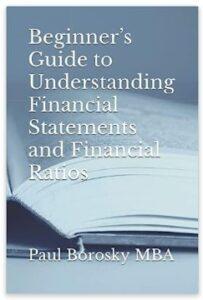How to Write a Cannabis Business Plan or Template
The cannabis industry has experienced rapid and remarkable growth in recent years, owing to the legalization or decriminalization of marijuana in many states. Currently, 48 out of the 50 states have taken steps in this direction, fostering a societal acceptance of cannabis usage. As a result, the demand for growing, distributing, and selling cannabis products is rising, creating a significant need for well-structured and comprehensive cannabis business plans.
A thoughtfully crafted cannabis business plan serves multiple purposes, enabling business owners to strategically outline their activities while using it for traditional financing and attracting potential investors. The plan becomes indispensable for navigating the industry's intricacies and demonstrating a clear roadmap to success. In response to this growing demand, our cannabis business plan writer offers valuable tips and tricks to guide writers in creating effective cannabis business plans or templates. These include addressing legal and regulatory considerations, conducting thorough market research, defining target markets, outlining revenue streams, and detailing operational strategies.
By adhering to these guidelines, business owners in the cannabis industry can craft a well-informed and compelling business plan that facilitates their ventures' growth and instills confidence in stakeholders and potential investors, positioning them for success in this thriving and dynamic industry.
CHECK OUT OUR CANNABIS BUSINESS PLAN TEMPLATE!!!
Executive Summary for a Cannabis Business Plan.
The Executive Summary of a cannabis business plan serves as a concise overview of the document, presenting the key points comprehensively. While challenging, when effectively executed, it provides readers with a broad understanding of the cannabis company's operations, target market, and profit projections. To achieve this, our cannabis business plan writer recommends including specific segments in the Executive Summary, such as company information, target market, competitive advantages, funding needs, and first-year revenues and profits.
Each section in the Executive Summary should be brief, comprising no more than a paragraph with minimal fluff. By adhering to this approach, the reader gains a clear and informative snapshot of the business plan, outlining the company's vision and strategies for success.
With careful consideration and concise presentation, the Executive Summary becomes an essential tool for stakeholders and potential investors to assess the viability and potential of the cannabis venture. Providing a comprehensive overview of critical aspects, this summary is a compelling introduction to the cannabis business plan, enticing readers to explore the entire document for a deeper understanding of the company's path to success.
Company Information and Location.
The Company Information and Location section of a cannabis business plan is vital and should contain key details about the company, its address, and the significance of the chosen location. Additionally, summarizing the cannabis product offerings is recommended in both this section and the dedicated Product and Services section.
Start by providing the company name and address and briefly explaining why the selected location benefits business operations. Highlight factors such as proximity to target markets, accessibility, and regulatory considerations. Incorporate a concise overview of the cannabis product offerings tailored to the business model. For instance, if it is a retail location, mention edible products, flowers, and other significant products or services. However, avoid excessive detail; this section should summarize the more detailed Product and Services section.
Maintain a balance between providing enough information to pique the reader's interest and avoiding overwhelming them with unnecessary specifics. Ensure the Company Information and Location section is a compelling introduction, motivating readers to explore the cannabis business plan for a deeper understanding of the company's vision and offerings.
Need Help Writing a Cannabis Business Plan?
Call or Text Paul, Doctoral Candidate, MBA.
321-948-9588
Email: Paulb@QualityBusinessPlan.com
Hours of Operation: 7 Days a week, 8 am to 9 pm EST.
Our business plan writer is located in Orlando, FL.
CLICK HERE TO CONTACT US TODAY!!!
Service Description and Competitive Advantages
In the Service Description and Competitive Advantages section of a cannabis business plan, the focus is on highlighting the unique selling points that set the business apart from competitors. Quality cannabis and a diverse range of cannabis-related products are often key elements to emphasize, drawing on the experiences of our business plan writer.
If the business prides itself on providing high-quality cannabis products, it is crucial to explain why these products stand out compared to lower-grade alternatives like "Schwag." Discussing the meticulous drying process, innovative packaging techniques, and higher THC levels can showcase the superiority of the products and appeal to discerning customers. For retail cannabis stores, emphasize the wide variety of products available to customers. Mention the different types of cannabis flowers, concentrates, edibles like brownies and cookies, and cannabis vape products offered. A diverse selection demonstrates an understanding of consumer desires and deep industry knowledge.
Highlighting competitive advantages such as product quality and variety positions the cannabis business for success. It establishes the business as a reputable source of premium cannabis products and differentiates it from competitors in the market. By presenting a compelling service description and showcasing these competitive advantages, the cannabis business plan captivates potential investors and stakeholders, instilling confidence in the venture's potential for long-term success.
Target Market for a Cannabis Business Plan.

The Target Market for a cannabis business plan varies depending on the business's role as a cultivator, distributor, or retailer. As a retailer, the plan may target individuals with chronic diseases, such as arthritis, who seek cannabis for medicinal purposes. Additionally, from a recreational perspective, the target market may include college students at local universities who are interested in cannabis for leisure.
For cultivators, the target market would shift to distributors in the area who need a reliable and quality source of cannabis products. Alternatively, cultivators may focus on regional retailers, bypassing the middleman and directly supplying cannabis products to local stores. Regardless of the chosen strategy, it is crucial to expressly state the target market in the cannabis business plan and explain why it is significant to the organization's success. For retailers, understanding the needs of individuals with chronic illnesses or recreational users is essential to tailor product offerings and marketing strategies effectively. For cultivators, identifying reliable distributors or retailers in the area ensures a steady and sustainable market for their products.
By clearly defining the target market and its importance, the cannabis business plan demonstrates a thoughtful approach to meeting customer needs and capitalizing on relevant market opportunities. Understanding the target market strengthens the overall plan, making it more compelling to potential investors and stakeholders.
Industry Research for a Cannabis Business Plan
In conducting Industry Research for a Cannabis Business Plan, starting with a broad, national perspective is essential before delving into the local market. Begin by exploring national trends and statistics to comprehensively understand the industry's scale and potential. For instance, research from IBIS World indicates that the medical and recreational marijuana growing industry in the US has reached $11.6 billion in revenues, with competitors enjoying profits exceeding $1.5 billion. The average profit margin for medical and recreational growers is approximately 13.2%.
Once the national research is established, shift focus to the local market. Identify the number of competitors in the vicinity and analyze their price points compared to your own. Understanding the local competition is crucial for developing competitive pricing strategies. Moreover, pinpoint one or two differentiating factors that competitors may employ in their operations, setting them apart from others in the market. This insight helps identify potential gaps in the local market and informs strategies to position the cannabis business uniquely.
By following this structured approach to industry research, cannabis business owners can demonstrate a comprehensive understanding of national trends and showcase their competence concerning the local market. This in-depth analysis lays a solid foundation for the cannabis business plan, positioning it for success and enabling it to capitalize on opportunities in a rapidly evolving industry.
Owner and Management Section.

The Owner and Management Section of a cannabis business plan or template should commence by highlighting the educational background of the cannabis business owner. Clearly state any relevant degrees, specifying the field of study, the name of the educational institution, and any notable specializations attained. For instance, if the owner holds a degree in business from a reputable university, this information should be included.
Subsequently, detail the owner's relevant work experience, focusing on roles directly related to the cannabis business's operations. For example, if the plan involves retail cannabis sales, emphasize any prior experience in retail management or sales. Conversely, if the business centers around cannabis cultivation, highlight agricultural experience or related expertise that aligns with the venture's goals. Emphasizing the owner's educational background and relevant work experience establishes credibility and showcases their qualifications to run the cannabis business effectively. It demonstrates a strong foundation of knowledge and skills that will drive the venture's success.
By providing a concise and compelling Owner and Management Section, the cannabis business plan presents a clear picture of the expertise and capabilities of the owner, bolstering the plan's overall credibility and reassuring potential investors and stakeholders of the business's potential for success.
Funding Request for a Cannabis Business Plan
In the Funding Request section of a cannabis business plan, it is crucial to begin by stating the amount required to initiate and sustain the business operations. This figure should be well-calculated and cover all essential expenses for the cannabis venture.
Next, break down the funding requirements into essential categories and allocate a budgeted dollar amount for each category. For instance, a cannabis retailer may have categories such as working capital, cannabis inventory, buildout, shelving, POS system, security system, and training budget. Providing detailed budget allocations ensures that every aspect of the business is adequately financed and accounted for. Once the categories and their corresponding dollar amounts are identified, compile a comprehensive total at the bottom of the spreadsheet. This total should match the top-line dollar amount specified in the funding request, demonstrating meticulous financial planning and accuracy in the budgeting process.
This structured approach not only reveals the exact amount of capital needed to launch the cannabis operation but also offers a clear breakdown of how the funds will be allocated to different crucial aspects of the business. It showcases financial prudence and preparedness, making the funding request more appealing to potential investors and lending institutions. By presenting a well-organized and transparent Funding Request section, the cannabis business plan gains credibility and trust from stakeholders, enabling the venture to secure the necessary funding for a successful launch and sustainable growth.
Pro Forma Financials and Financial Projections for a Cannabis Business Plan.

The Pro Forma Financials and Financial Projections section of a cannabis business plan should be tailored to the specific needs and operations of the business. Depending on the nature of the cannabis venture, the financial projections can be structured systematically to provide a comprehensive overview of the financial outlook.
For instance, a cannabis cultivator may initiate their financial projections by determining the expected daily yield of cannabis cultivated and sold. Next, identify the variable costs of growing and harvesting cannabis flowers, such as disposable pots, soil, fertilizer, and packaging materials. On the other hand, a cannabis retailer may start by outlining the sales price of cannabis products and then calculate variable costs like inventory, procurement, and other costs associated with the retail operation.
Once variable costs are accounted for, the next step is identifying fixed costs associated with the business. These include lease expenses, utilities, security measures, employee wages, and other essential overhead costs. Subtracting the variable costs from the sales price for cannabis products will give the gross profits for each day. An estimate of the monthly gross profits can be obtained by multiplying the daily gross profits by the average number of days in a month (typically 30).
Finally, total the fixed costs and deduct this sum from the monthly gross profits to calculate the net profits for each month. While the process may appear meticulous, this structured approach to financial projections provides a transparent model for the cannabis business's financial outlook. It enables the business owner and potential investors to understand the projected revenue and expenses, facilitating informed decision-making and ensuring a solid financial foundation for the cannabis business plan.
Hopefully, these insightful tips and tricks for writing a business plan were helpful. Email or call us if you need help with a business plan or financial projections.
Author: Paul Borosky, Doctoral Candidate, MBA., Author
Owner of: Quality Business Plan and Quality Business Consultant.
Date: 7/18/2023